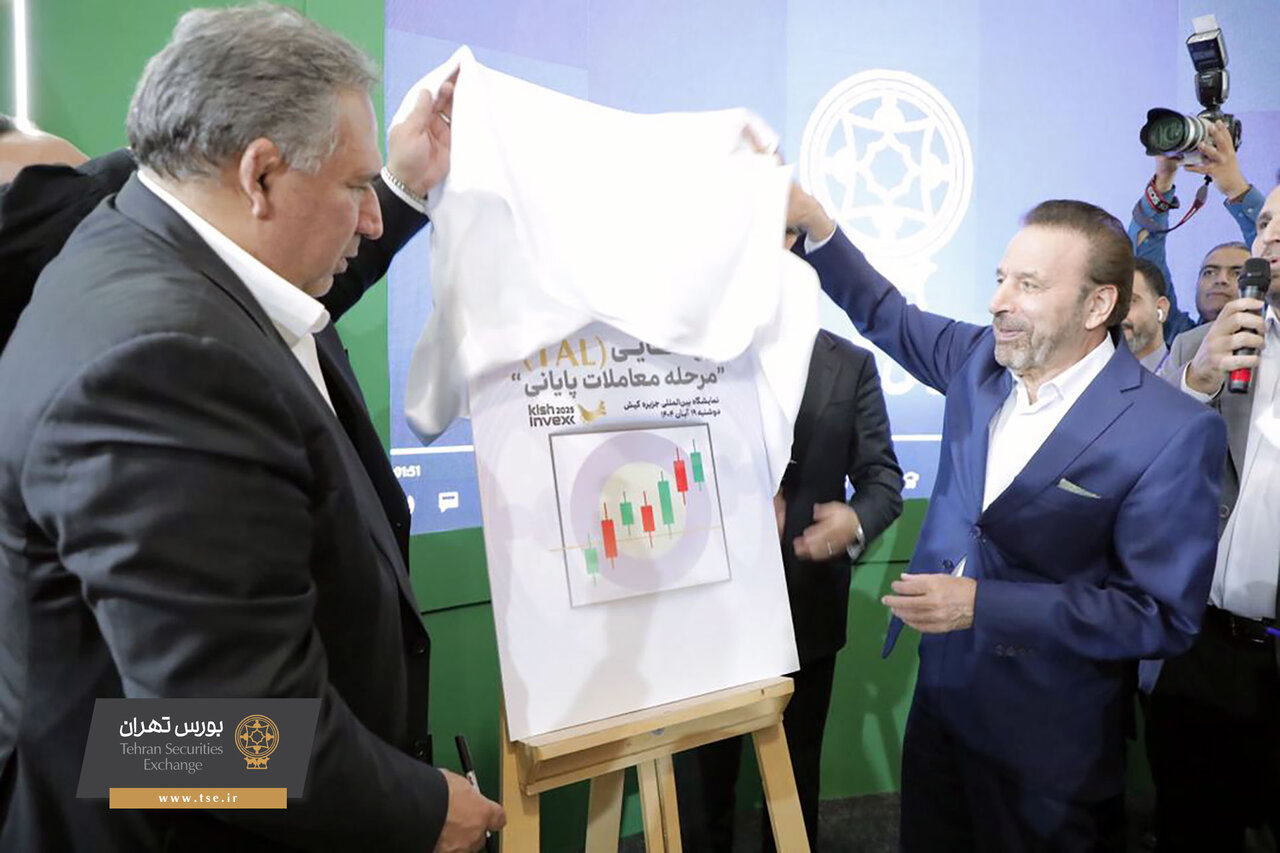TSE unveils TAL system to modernize stock market trading

TEHRAN – The 12th Kish International Exhibition of Investment Opportunities (Kish Invex 2025) saw the unveiling of the Trade At Last (TAL) phase, a new mechanism designed to enhance Iran’s capital market efficiency and transparency.
The event was attended by the head of the Securities and Exchange Organization (SEO), the head of the Tehran Securities Exchange (TSE), several capital market officials, lawmakers, and senior government representatives.
According to the TSE’s communications office, the TAL phase was developed to boost market efficiency, liquidity, and trading infrastructure. The new phase introduces a single-price auction based on the day’s final price, marking a key step toward aligning Iran’s stock market with international standards.
The TAL mechanism will allow investors to buy and sell shares at a final, stabilized daily price.
Currently, stock price movements in Iran’s capital market are restricted to a daily range of positive or negative three percent, meaning prices can fluctuate by up to six percent in one session. While this volatility benefits short-term traders, many institutional investors such as fund managers, holding companies, and investment firms prefer trading based on the day’s closing price to reduce exposure to short-term risk.
The TAL phase addresses this preference and is expected to attract more conservative investors while increasing market efficiency and confidence.
SEO head: Market entering phase of stability and balance
According to the Iranian Capital Market News Agency (SENA), SEO Head Hojjatollah Seyedi said that Iran’s capital market has entered a stage of stability and equilibrium following several months of volatility.
He noted that despite challenges such as energy imbalances and financial constraints, listed companies performed strongly in the first half of the year.
“After the 12-day conflict, the resilience shown by the financial market was remarkable,” he said, crediting the collective efforts of market participants.
Seyedi explained that Iran’s capital market has successfully passed three of the five recovery phases — asset protection, liquidity restoration, and achieving balance — through the coordinated work of financial institutions, listed firms, analysts, and both retail and institutional investors.
He emphasized that confidence and transparency have been crucial in stabilizing and growing the market, adding that fairness in trading ensures the protection of shareholders’ rights, especially small investors.
Seyedi also pointed to significant investments in IT, fintech, and blockchain technologies as factors restoring market trust and improving transparency.
“With the efforts of all stakeholders, market indices have reached healthy levels and returns have improved,” he said. “What now matters most is the trading volume and the participation of retail investors.”
Expressing optimism, Seyedi added: “We are now in the phase of stability and balance, preparing for renewed growth and expansion in the capital market.”
EF/MA
